Information online doesn’t always have to be valuable to gain attention. Trivia also draws a lot of curiosity, and a good example is the How Everything Works Instagram page.
The account has nearly four and a half million followers. It features images containing random facts about different facets of life, from 400-year-old ocean predators to rare, expensive fruits. The posts are entertaining and informative; you will likely learn something new.
#1
"Scientists have discovered reindeer use a special form of night vision to help them find food in the colder months.
The surface of their eye changes from golden-orange in summer to a rich blue colour in the winter.
Experts think their vision might have evolved to help them see in snowy conditions and explains why they are able to see food so well in the dark."
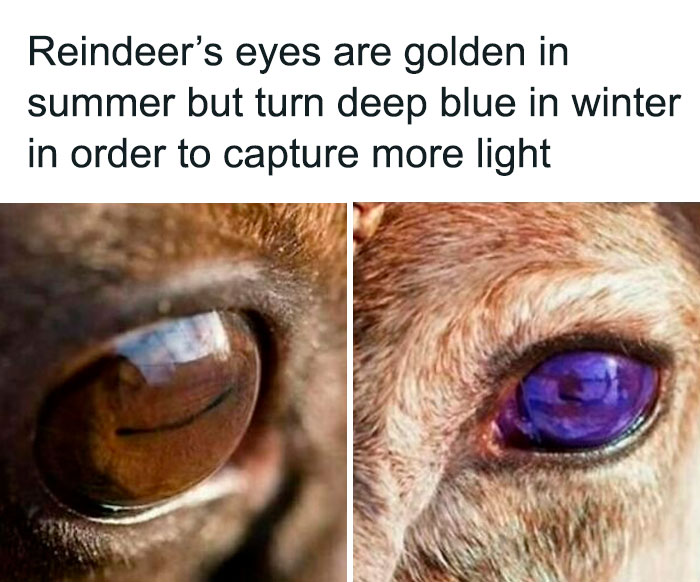
Image credits: howeverythingworks
For some experts, there is power in knowing what is deemed useless, trivial information. According to product design veteran Stephen Marshall-Rees, staying curious can enhance our problem-solving skills.
"What may seem trivial or irrelevant today could be the key to unlocking tomorrow's breakthroughs," he wrote.
#2
"Dr. Gary Greenberg’s photographs magnify grains of sand 100 to 300 times, exposing swirling microscopic shells, eroded crystals and colorful coral fragments."
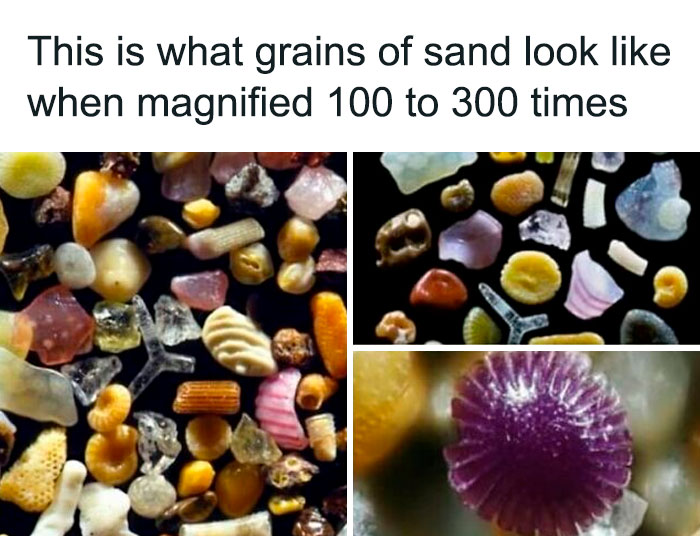
Image credits: howeverythingworks
#3

Image credits: howeverythingworks
#4

Image credits: howeverythingworks
Humans seem naturally drawn to facts that won’t necessarily add value to our lives. Some are even willing to endure slight pain to know useless information.
University of Melbourne psychologist Stefan Bode conducted a study in 2021 in which he showed participants a series of coin flips. Each side of the coin had a small monetary reward, but the participants were unaware of which ones came with the prize.
#5
"Jonathan, a Seychelles giant tortoise, is estimated to have hatched around 1832, making him the oldest known living land animal at about 191 years old.
Residing on Saint Helena, he was brought there in 1882 and named in the 1930s. Jonathan continues to live at Plantation House, cared for by the government.
Despite his age, he remains active and spends his days with his mate Frederik. Jonathan’s remarkable longevity has garnered media attention and even royal visits, including from Prince Edward, Duke of Edinburgh, in January 2024."
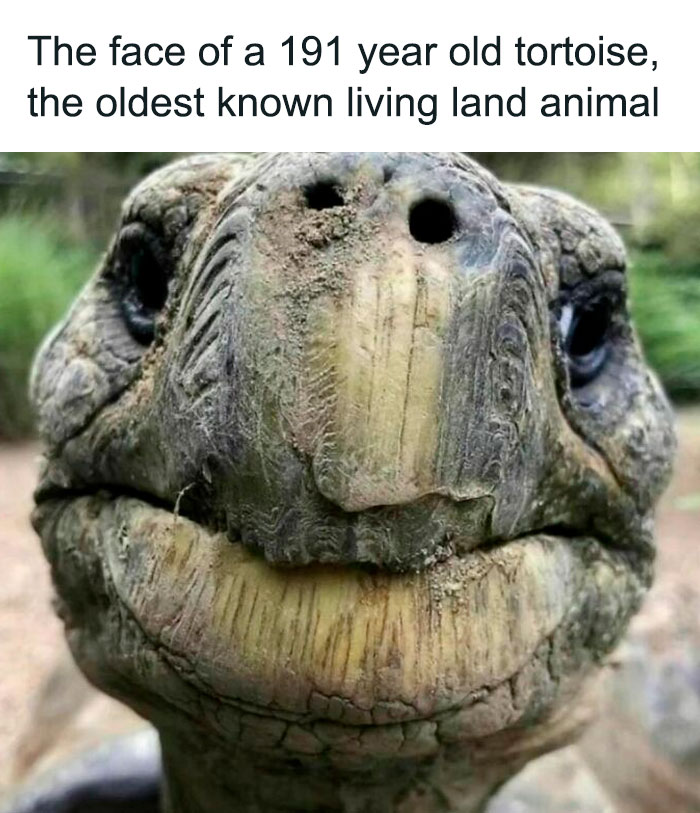
Image credits: howeverythingworks
#6

Image credits: howeverythingworks
#7
"In case you need more explanation, a cape is a point of land projecting into a body of water while a bay is and area of water surrounded by land on three sides."
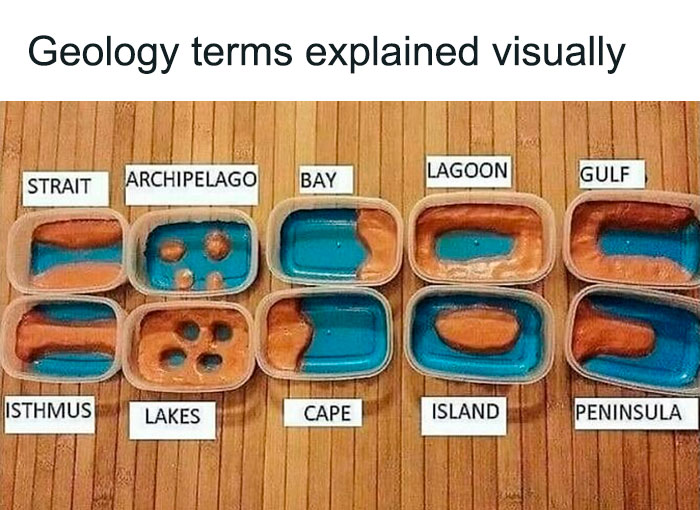
Image credits: howeverythingworks
Bode then made an offer: participants would know the payouts of each coin flip. But in exchange, they would have to endure a brief but harmless flash of heat to the forearm.
Knowing how much they were getting did not affect the outcome of the coin flip, and they would earn the same amount regardless of whether they knew the values.
#8
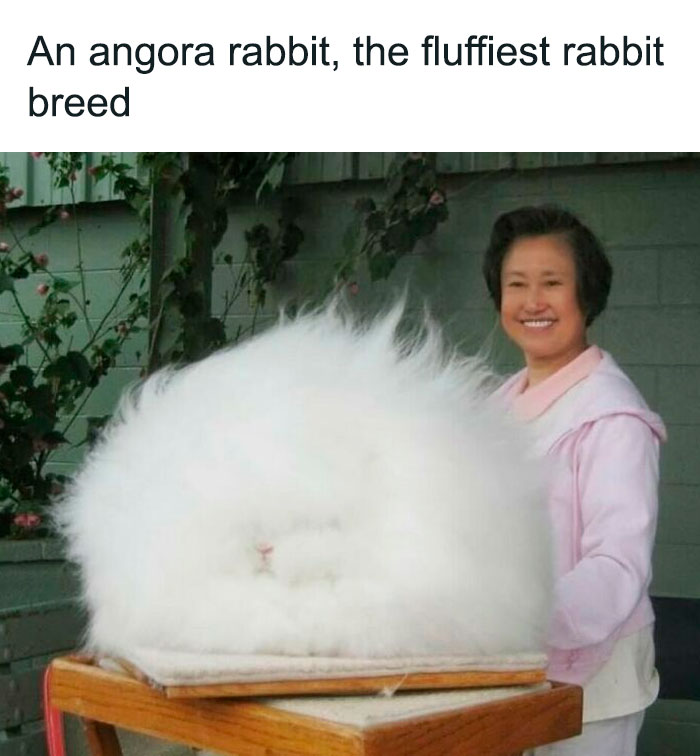
Image credits: howeverythingworks
#9
"A knife makes a straight cut, but paper acts like a saw blade and does more damage to nerve endings. Paper also leaves behind tiny fibres, irritating the wound even more"
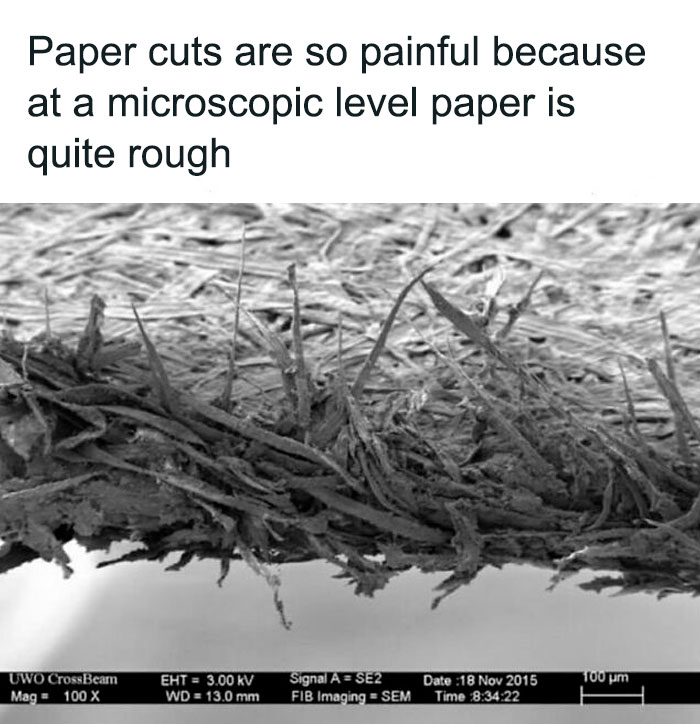
Image credits: howeverythingworks
The results were telling. In 75% of the experiments, participants were willing to handle the flash of heat to the forearm if it meant knowing how much the payouts were. And when the amounts increased, so did their willingness to endure more pain.
#10

Image credits: howeverythingworks
#11
"Baby owls sleep face down because their heads are too heavy. Snopes spoke with Denver Holt, researcher and founder of the Montana-based nonprofit Owl Research Institute, who said that while this behavior has been observed in owl chicks living in captivity, it is not common."

Image credits: howeverythingworks
#12
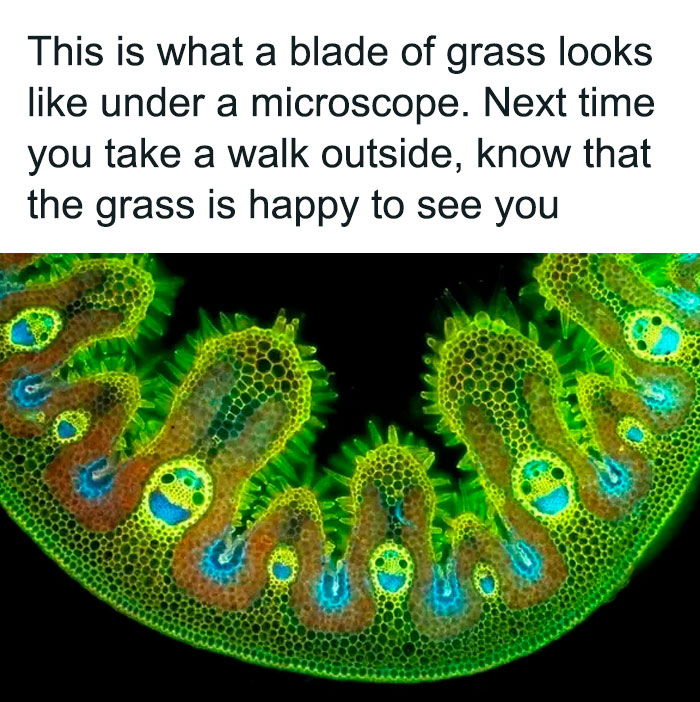
Image credits: howeverythingworks
University College London neuroscientist Tali Sharot was amazed at the lengths certain people would go to for the sake of knowing something trivial. According to her, the value of information increases with higher uncertainty.
“Humans value information even when they cannot use it to change outcomes,” she pointed out.
#13
"An “Aircraft Listener” photographed in around the 1920s using scoop-shaped reflectors that direct the sound into large-diameter tubes in order to try and locate aircraft at a distance due to their loud engines."

Image credits: howeverythingworks
#14
"They’re called crinkle crankles. A single leaf wall over that distance would need brick piers approx every 1.5-2m if it was a retaining wall it would need to be at least 9” wide (2 bricks). The crinkle crankle has more strength due to it’s curved nature so can be 4” wide or a single leaf of bricks. For the maths if we can assume they’re true semi-circles then each semi circle would be 1/2piD or 1.57D whereas a double leaf wall would be 2D for the same length D Therefore using 21.5% less bricks than a double leaf wall hope that clears things up"

Image credits: howeverythingworks
#15

Image credits: howeverythingworks
#16

Image credits: howeverythingworks
Author Scott H. Young encourages continuous learning because it shapes one's view.
“Even if ideas can’t make you money, friends, or a six-pack, it can still make your model of reality a little more accurate. And an accurate model of reality is useful to have, even if any particular idea that helps you form it is not,” he wrote in an article.
#17

Image credits: howeverythingworks
#18
"After the Hiroshima, Fukushima, and Chernobyl nuclear disasters, fields of sunflowers were planted across the affected landscapes to help absorb toxic metals and radiation from the soil. New research now suggests that sunflowers (Helianthus) might be as good for the environment as they are pretty to look at."

Image credits: howeverythingworks
#19
"The Tsar Bomba mushroom cloud was approximately 25 miles wide at its base and over 40 miles high!!"

Image credits: howeverythingworks
#20
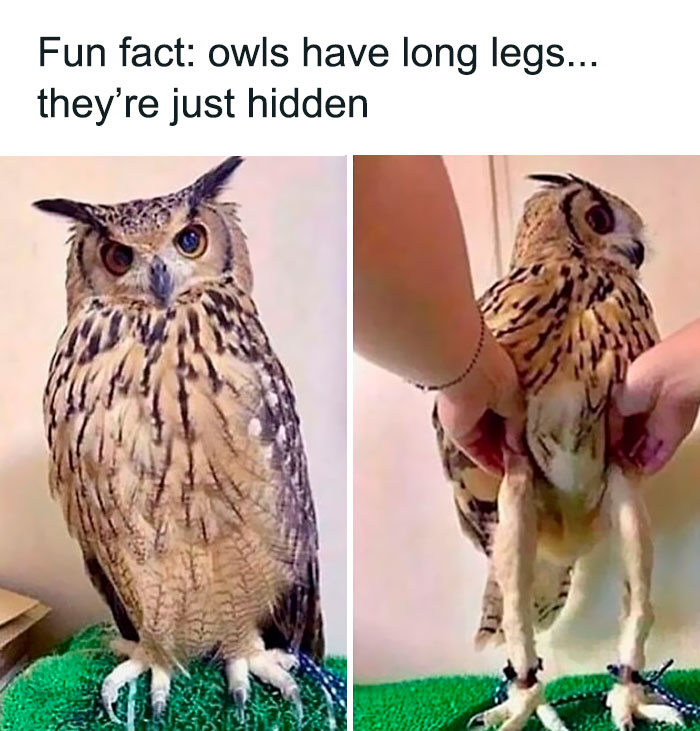
Image credits: howeverythingworks
#21

Image credits: howeverythingworks
#22
"To Mountain Gorillas, anyone who keeps direct eye contact is a challenger and an enemy who has come to disrupt the family. Direct eye contact will, therefore, trigger the silverback to charge and fight you in defense of his family. If you want peace with Gorillas, avoid direct eye contact."
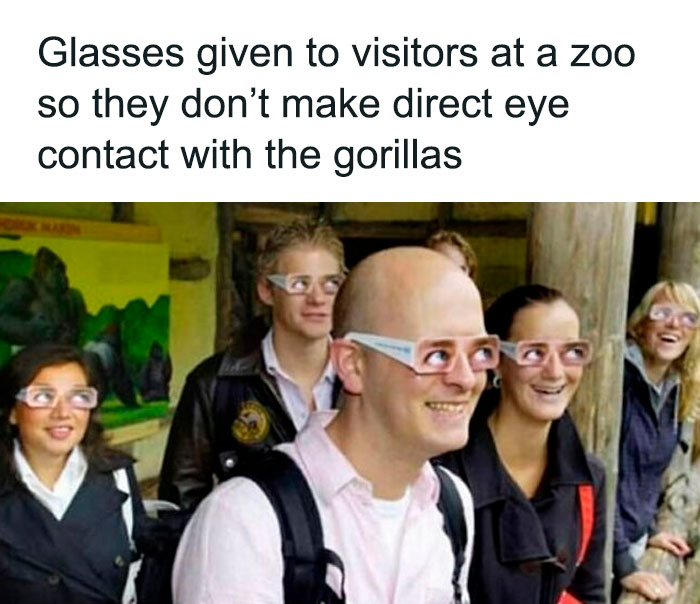
Image credits: howeverythingworks
#23
"Beavers are known for their ability to transform ecosystems by building dams and creating wetlands. In Nevada, beavers have been instrumental in restoring the desert river ecosystem by creating a series of dams that slow the flow of water and allow it to spread out, which helps to replenish groundwater and create areas of wetland habitat. These wetlands can support a variety of wildlife, even during times of drought, and play a crucial role in maintaining the overall health of the ecosystem. The work of beavers in creating these wetlands can have far-reaching positive impacts on the local environment, including providing habitat for various species and improving water quality."
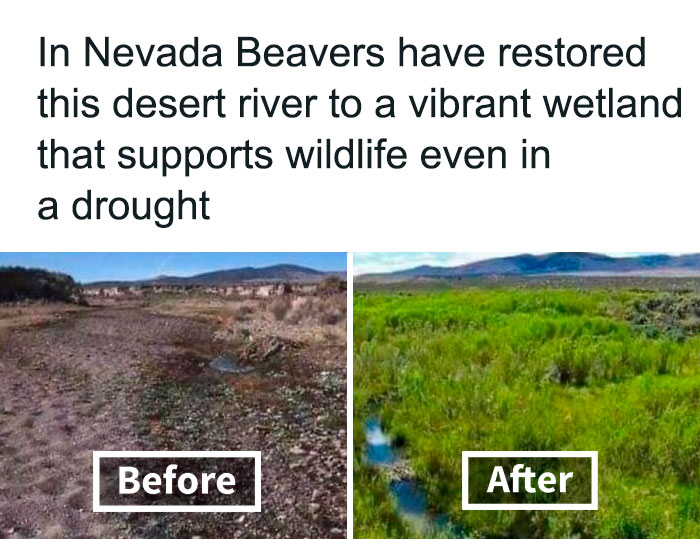
Image credits: howeverythingworks
#24
"A village in the Italian Alps is finally basking in winter sunlight thanks to a giant mirror installed on a mountain top to reflect the sun’s rays into the main square.
Viganella, with a population of less than 200, lies in a valley so steep that each year from November 11 to February 2 it hardly receives any sunshine.
That was until Mayor Pierfranco Midali decided to do something about it.
Now a 5-metre (16-foot) high, 8-metre (26-foot) wide mirror tracks the sun’s movement and reflects its rays into Viganella’s historic piazza.
The mirror, which cost around 100,000 euros (67,000 pounds), was unveiled on Sunday to the delight of the inhabitants."
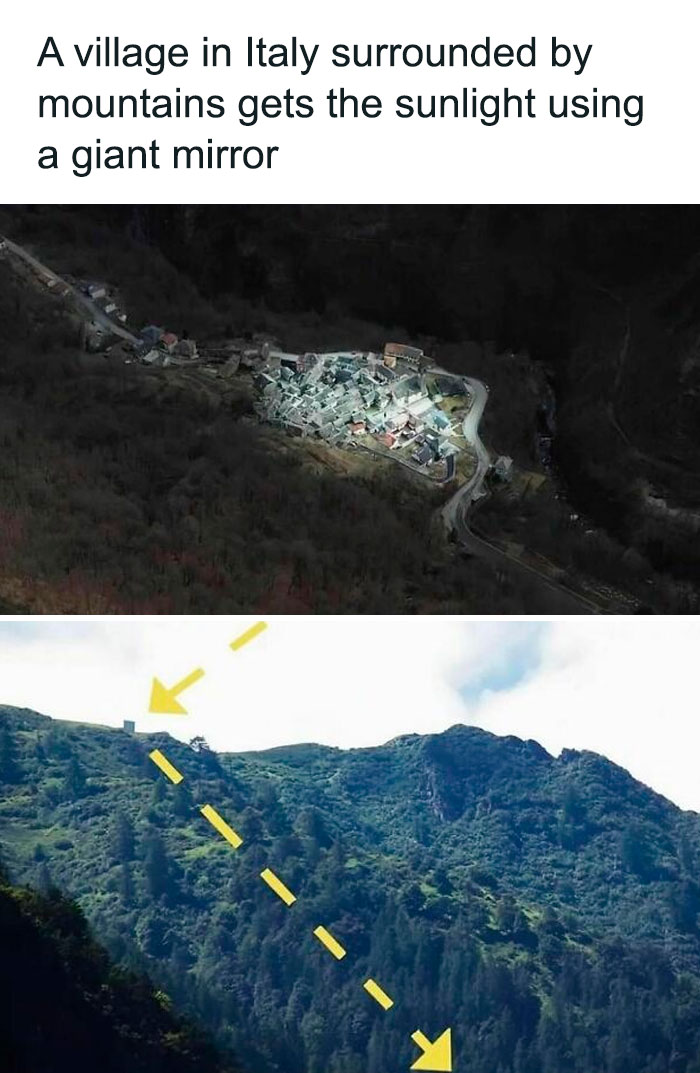
Image credits: howeverythingworks
#25
"His shoulder touched a live wire and the current passed through his entire body, including the optic nerve, which connects the eye to the brain. The ettect was two bizarre star-shaped electrical burns in his eyes, according to The New England Journal of Medicine."

Image credits: howeverythingworks
Not everything we learn in school has a practical application. But all those tedious activities are also a form of practice when entering the real world. Cognitive psychological scientist Dr. Cindy Nebel explains how.
“It’s also possible that one day in the future, that student may need to sit through a truly pointless meeting, one that does not affect them in any way,” Dr. Nebel wrote. “Wouldn’t it be great for them to have some practice appreciating the information set before them, trying to make it relevant to their own lives, or simply appearing engaged?”
#26
"Schizophrenia is a serious mental disorder in which people interpret reality abnormally.
Schizophrenia may result in some combination of hallucinations, delusions, and extremely disordered thinking and behavior that impairs daily functioning, and can be disabling."
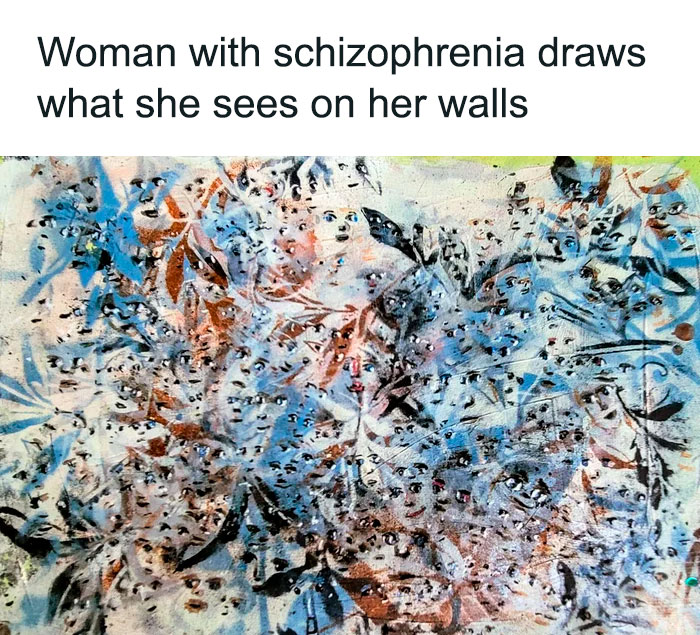
Image credits: howeverythingworks
#27
"That nodosaurid, described in 2017, is a mummy: the Tutankhamen of the dinosaurs. Its exceptional state of preservation after 112 million years makes it one of the most fascinating jewels of paleontology, one that allows researchers to study one of the most intriguing processes of fossilization: natural mummification."
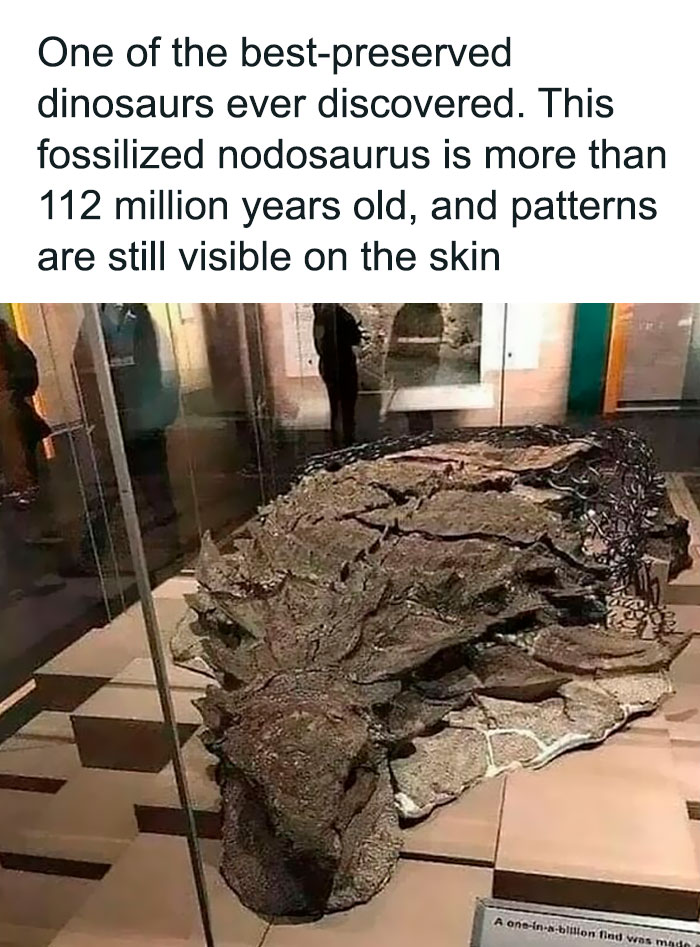
Image credits: howeverythingworks
#28

Image credits: howeverythingworks
#29

Image credits: howeverythingworks
Since this list is all about “useless” but interesting facts, here’s one about sharks. According to the US National Oceanic and Atmospheric Administration (NOAA), these ocean predators occasionally enter a daze.
“When you flip a shark upside down, they go into a trance-like state called tonic immobility. This is the reason why you often see sawfish flipped over when our scientists are working on them in the water.”
#30
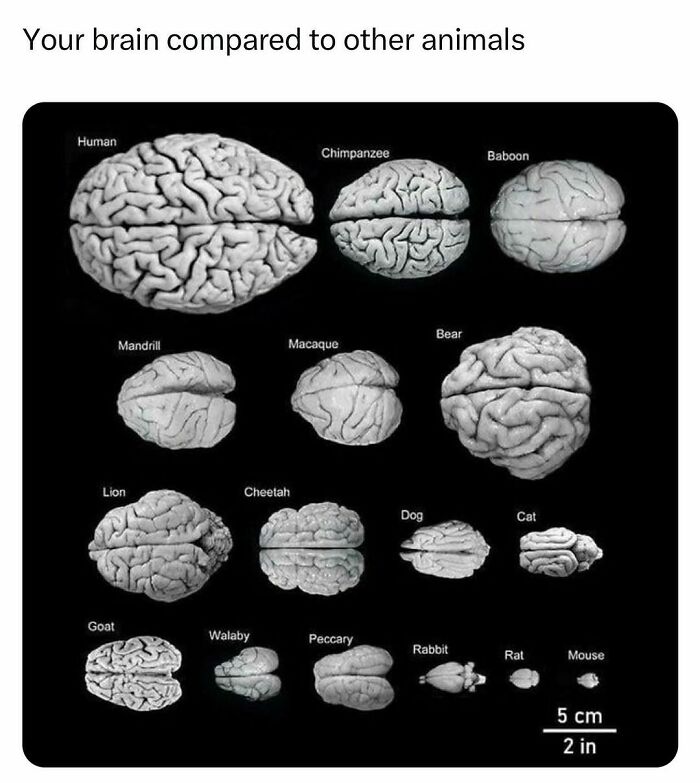
Image credits: howeverythingworks
#31
"The image comes to us from Metrocosm, the website of data visualization expert Max Galka.
Bangladesh and three provinces in India, which are highlighted in red, take up just 160,000 sq. mi (415,000 sq. km) - that’s smaller than California. Together they hold more population than all of the blue territories on the map.
That’s right, the blue area contains the entirety of many significant countries, such as Canada, Australia, Norway, Sweden, and Saudi Arabia. The blue even includes parts of China, the United States, and most of Russia."
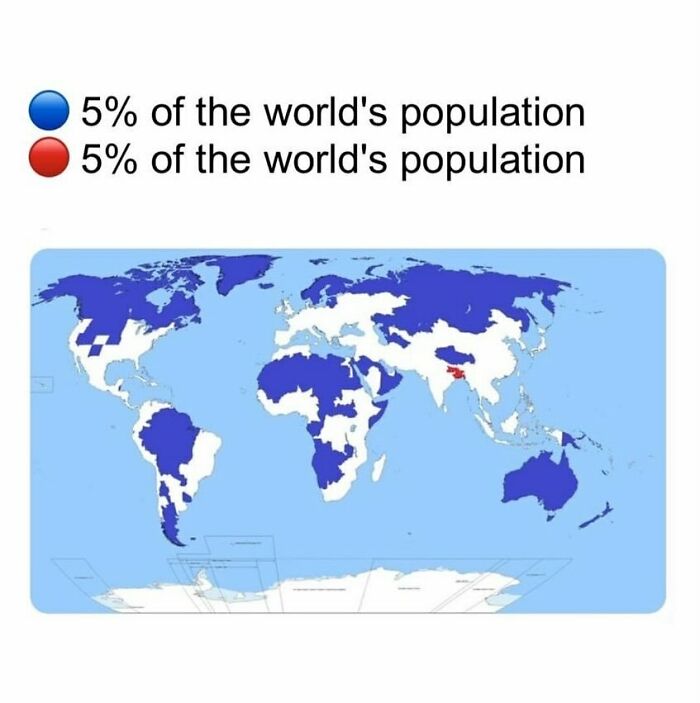
Image credits: howeverythingworks
#32
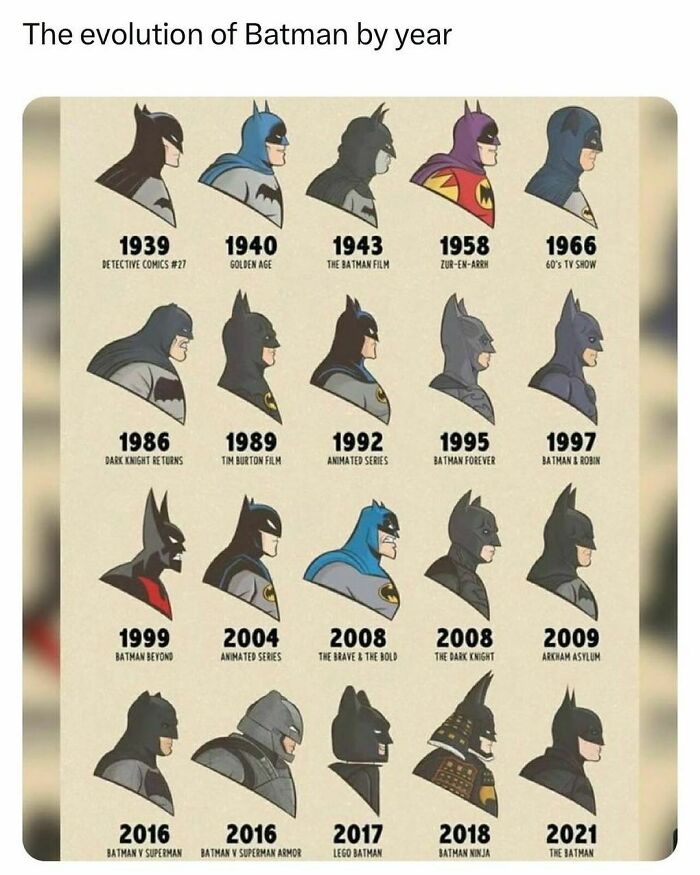
Image credits: howeverythingworks
#33
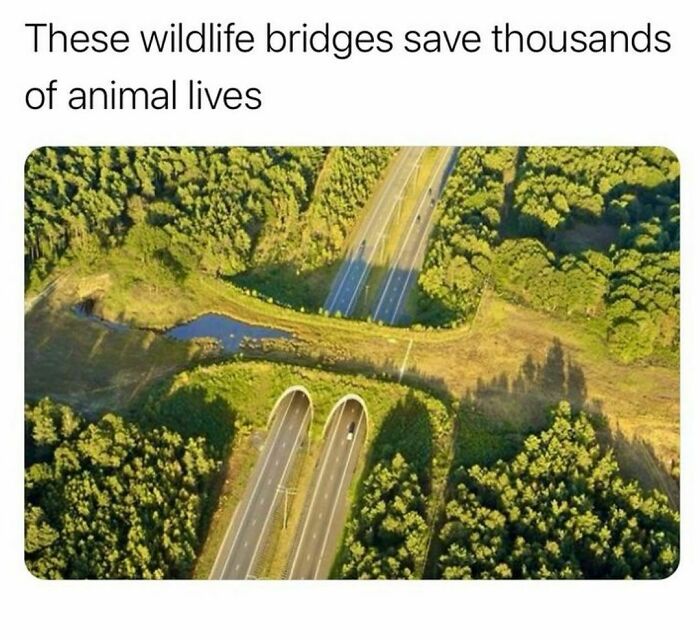
Image credits: howeverythingworks
#34
"Puffer fish range in size from the 1-inch-long dwarf or pygmy puffer to the freshwater giant puffer, which can grow to more than 2 feet in length. They are scaleless fish and usually have rough to spiky skin. All have four teeth that are fused together into a beak-like form"

Image credits: howeverythingworks
#35
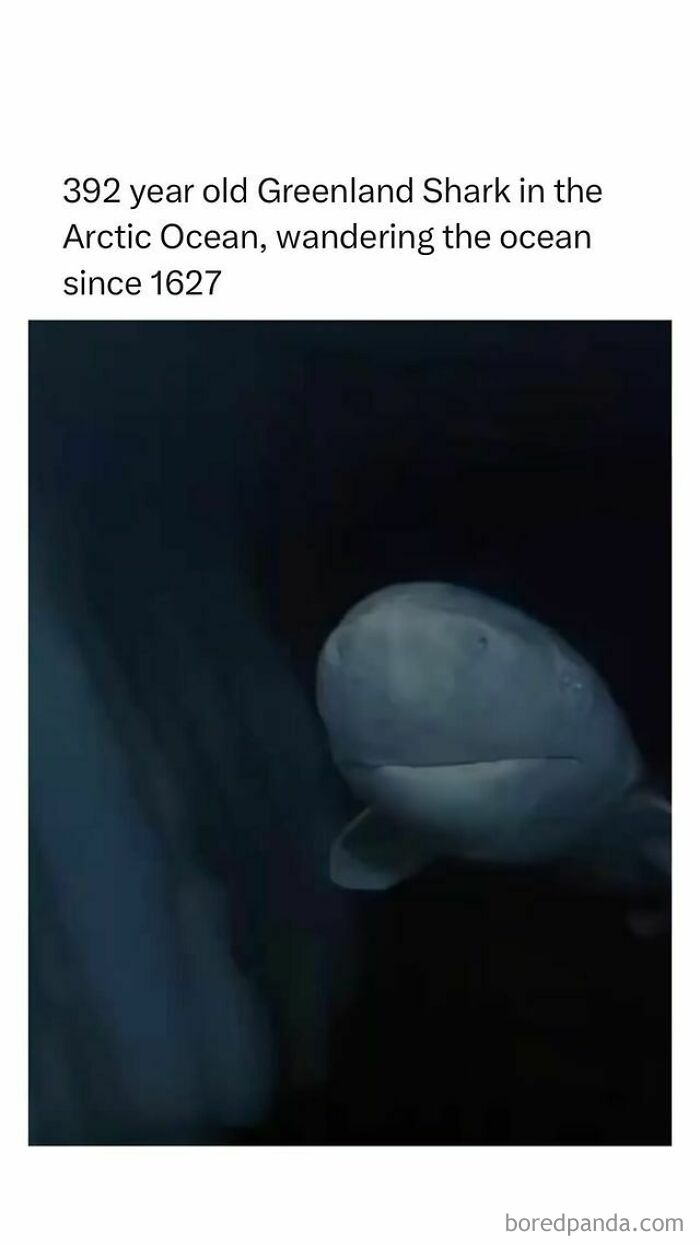
Image credits: howeverythingworks
#36

Image credits: howeverythingworks
#37
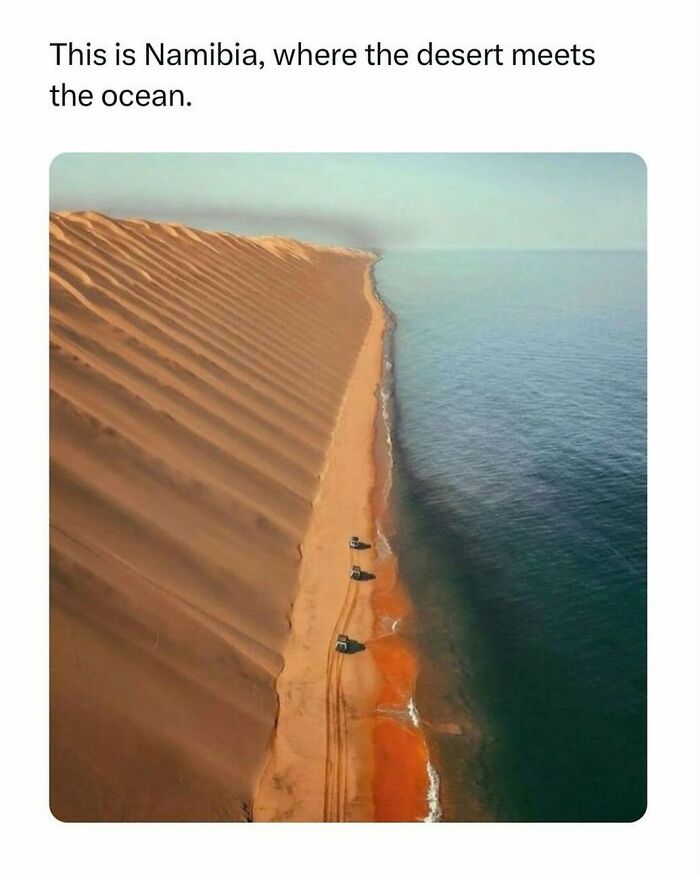
Image credits: howeverythingworks
#38

Image credits: howeverythingworks
#39
"Bagworm caterpillars are known for their unique behavior of carrying logs to construct their protective cases. They use silk produced by specialized glands to attach these materials together, forming a sturdy and camouflaged shelter.
The process typically involves the caterpillar cutting small pieces of vegetation, such as twigs, leaves, and bits of bark, and then attaching them to its body with silk. As the caterpillar grows, it continues to add more material to its case, which can become quite large in size relative to the caterpillar itself."
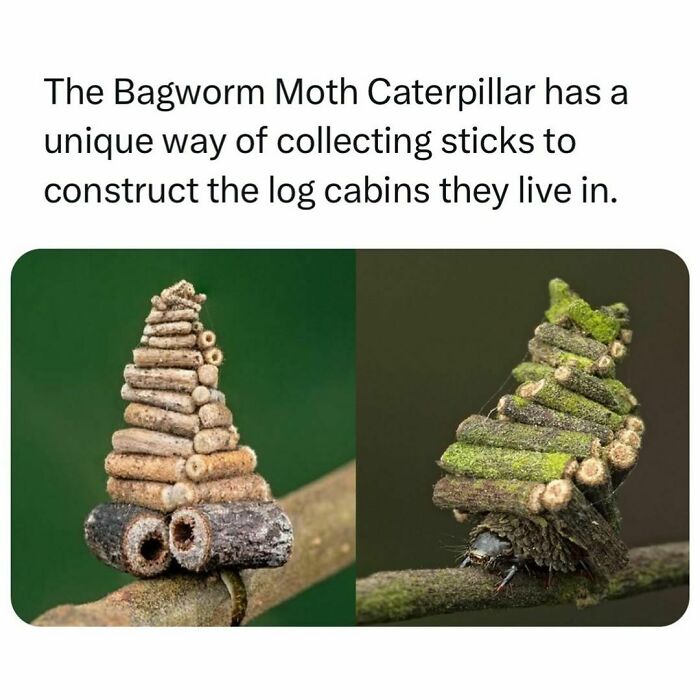
Image credits: howeverythingworks
Comets apparently smell like rotten eggs, burning matches, urine, and almonds. While it can be challenging to prove, the chemical components may give an idea.
Here’s an explanation from BBC’s Science Focus Magazine: “Traces of hydrogen sulfide, ammonia, sulfur dioxide, and hydrogen cyanide were all found in the makeup of the comet 67P/Churyumov-Gerasimenko.”
#40

Image credits: howeverythingworks
#41

Image credits: howeverythingworks
#42
"Researchers have observed a male Sumatran orangutan, Rakus, using medicinal herbs to treat a facial wound, suggesting orangutans possess advanced cognitive abilities.
Rakus chewed leaves from the Fibraurea tinctoria plant, known for its medicinal properties, and applied the juice directly to the wound, which subsequently healed.
This marks the first documented instance of a wild animal using a plant with known medicinal properties to treat an open wound.
The findings offer insights into the origins of human wound care, possibly dating back to a common ancestor shared with these primates."
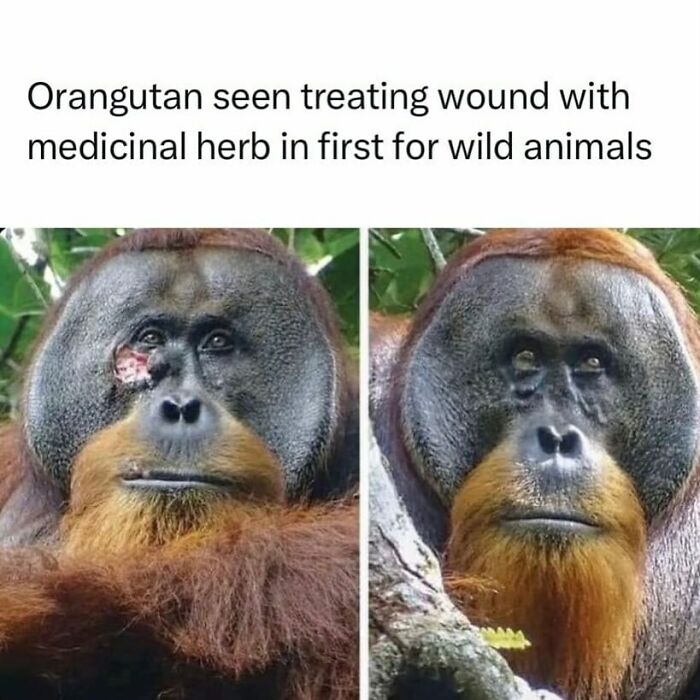
Image credits: howeverythingworks
#43
"Candelabra cactus sounds like a cactus and looks like one, but is actually a euphorbia. Its botanical name is euphorbia ingens. Ingens in Latin means “massive” or “extraordinary,” and indeed, Euphorbia ingens can eventually become a massive 30 foot plus tree spreading equally as wide. However, it can take 20 years for the plant to reach that point under ideal conditions, making it accessible for many people to enjoy in smaller spaces for a long period of time."

Image credits: howeverythingworks
#44
"When you need to check the size of something, you don’t always have the best measuring tools on hand. Here are some tips on doing the job with and without rulers:
Use your own body for fast, approximate measuring.
The first joint of an index finger is about 1 inch long.
When a hand is spread wide, the span from the tip of the thumb to the tip of the pinkie is about 9 inches; from the tip of the thumb to the tip of the index finger, around 6 inches. It’s about 18 inches from the elbow to the tip of the middle finger. Of course, check these dimensions by measuring yourself first"

Image credits: howeverythingworks
#45
"A butterfly wing transplant is a delicate procedure carried out to repair a butterfly’s damaged wing, enabling it to fly again. This involves carefully removing the damaged part of the wing and replacing it with a similar piece from a donor butterfly of the same species, typically one that has died naturally. The donor wing is usually attached with a light adhesive, like a non-toxic glue.
This kind of procedure is most likely to be successful on larger butterfly species, such as Monarchs, where the size of the wings makes the process easier.
However, it requires an understanding of the butterfly’s anatomy, extreme precision, and a gentle hand, due to the delicate nature of the wings and the scales that cover them."
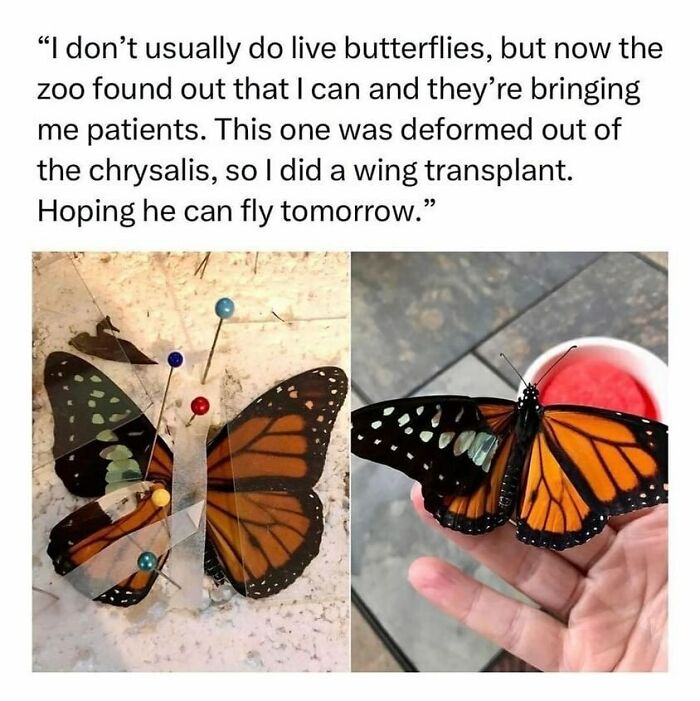
Image credits: howeverythingworks
#46
"A Chimpanzee who suffers from alopecia shows how muscular these primates actually are underneath their usual coat of hair.
Chimpanzees are considered to be humans’ closest living relative, according to evidence from fossils and DNA sequencing and share between 95 - 98% of the same DNA. However, in relation to muscular strength, the two species cannot be compared. As per wildlife experts, chimps are incredibly strong and fast, so humans are easily overpowered.
According to biologist Alan Walker, the chimps are in fact at least four times as strong as humans and based on scientific research, the difference in strength between the two is relative to how well the muscles perform. In chimps, the muscle fibres closest to the bones - deemed to be the source of strength - are much longer and more dense. In other words, a chimp is able to generate more power despite using the exact same range of motion. Though, unlike humans, they don’t possess much control over how they use their muscles and end up using more strength than necessary."
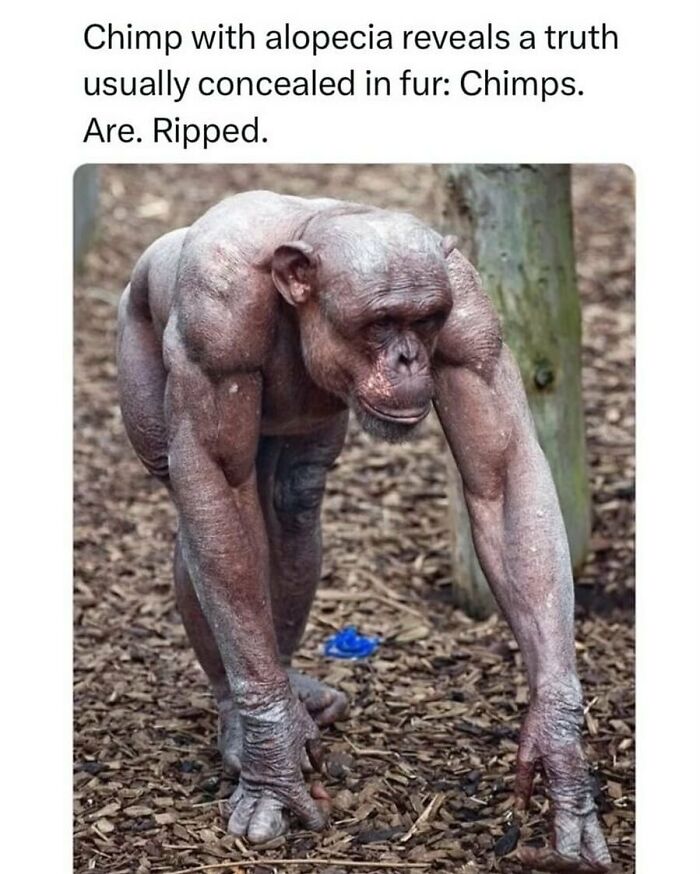
Image credits: howeverythingworks
#47
"Meteors appear in different colors, depending on the chemical composition of the space rock and the air it is passing through. A meteor with high iron content, for instance, will appear yellow. A meteor with high calcium content may appear as a purple streak of light."

Image credits: howeverythingworks
#48

Image credits: howeverythingworks
#49

Image credits: howeverythingworks
#50
"These are four different pencil grip techniques, each with a specific name based on the positioning of the fingers and thumb. The Dynamic Tripod and Dynamic Quadrupod grips involve three and four fingers, respectively, working together to control the pencil’s movement. In contrast, the Lateral Tripod and Lateral Quadrupod grips rely on the thumb and index finger to grip the pencil from the side, with the other fingers providing support. Understanding these grip classifications can help educators and occupational therapists assess and improve children’s handwriting skills, as an efficient and comfortable pencil grip is essential for developing proper writing techniques."

Image credits: howeverythingworks
#51

Image credits: howeverythingworks
#52
"Members of Indonesia’s Buton tribe have piercing blue eyes due to the fact that they all suffer from a genetic condition known as Waardenburg syndrome. Bright sapphire eyes are one symptom of the disorder."
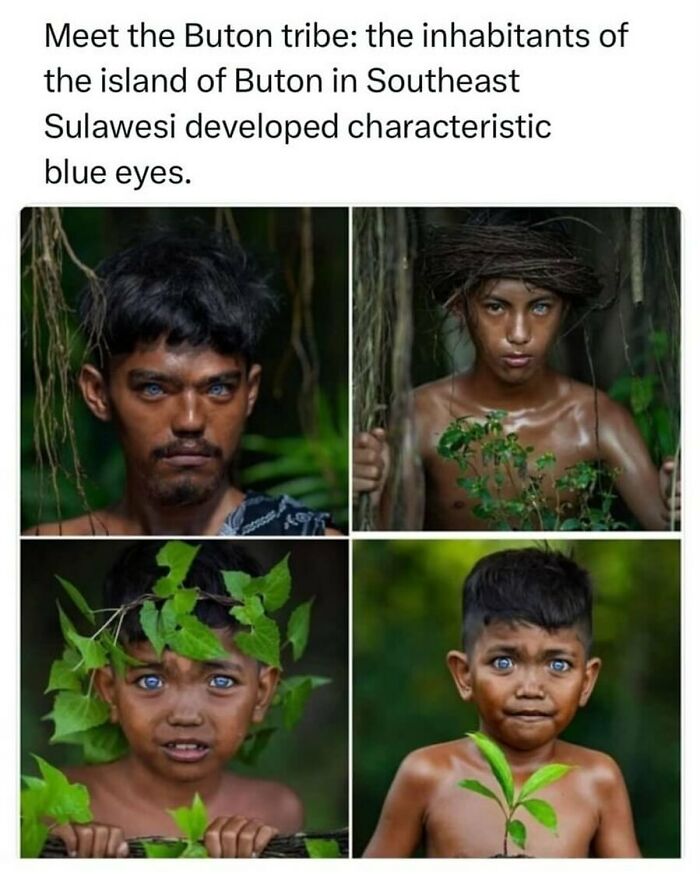
Image credits: howeverythingworks
#53

Image credits: howeverythingworks
#54

Image credits: howeverythingworks
#55
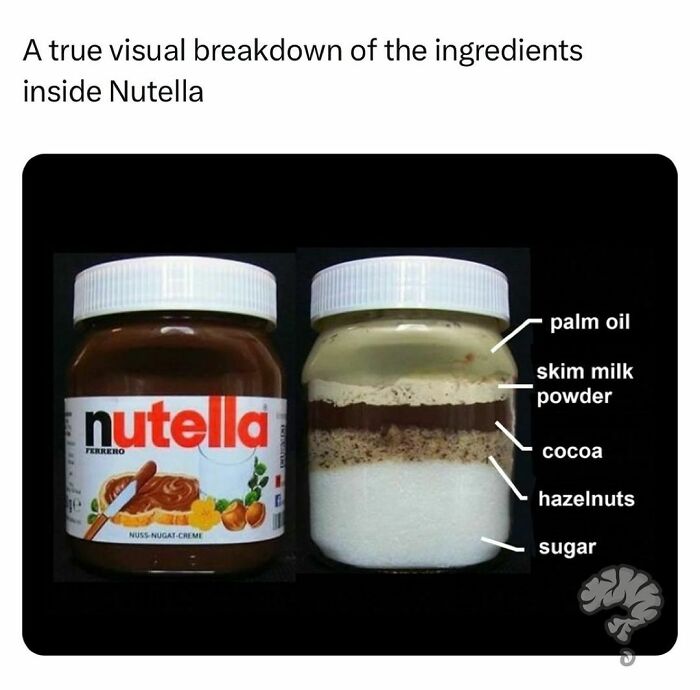
Image credits: howeverythingworks
#56

Image credits: howeverythingworks
#57

Image credits: howeverythingworks
#58

Image credits: howeverythingworks
#59

Image credits: howeverythingworks
#60
“Indulge in nature’s rare jewel: the mesmerizing allure and delectable taste of black diamond apples. A feast for the eyes and a treat for the taste buds."
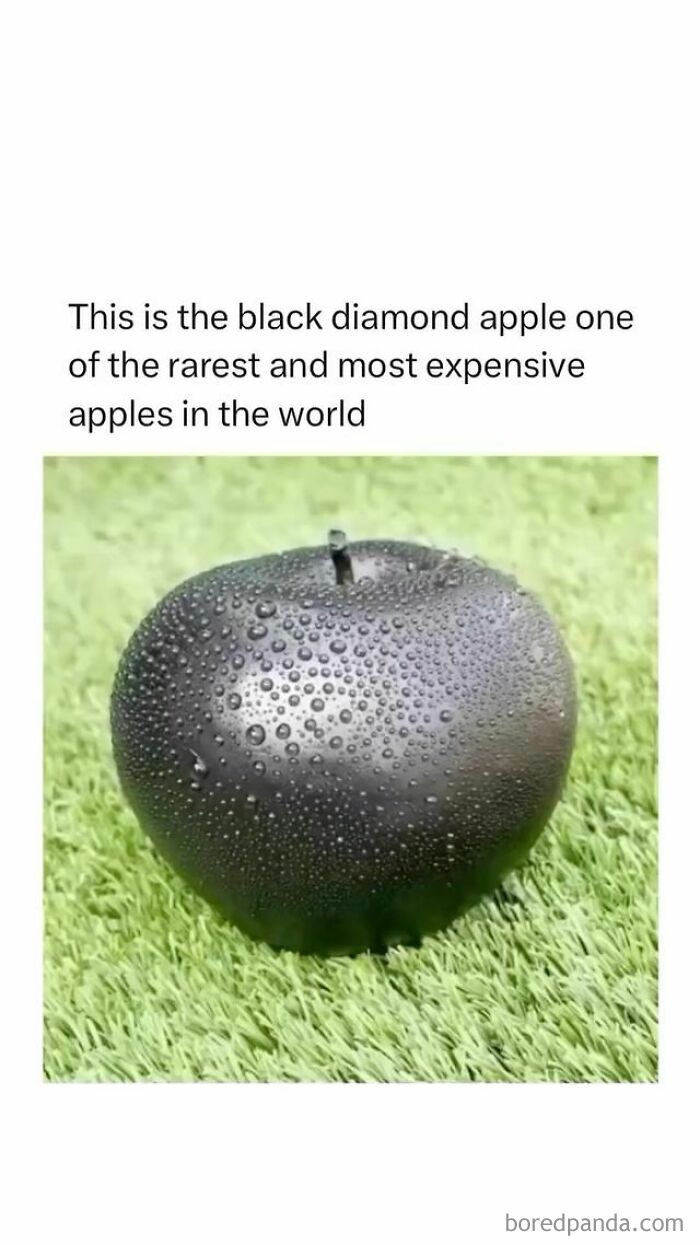
Image credits: howeverythingworks
#61
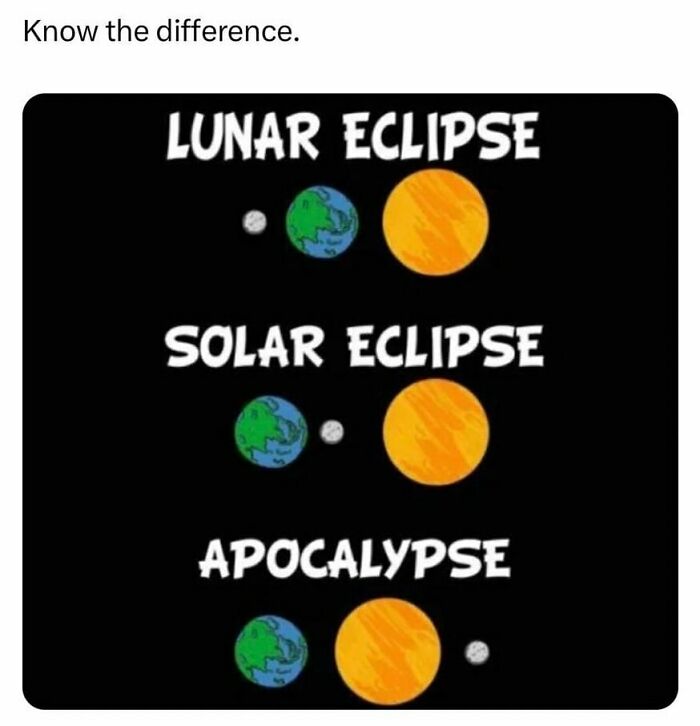
Image credits: howeverythingworks
#62

Image credits: howeverythingworks
#63

Image credits: howeverythingworks
#64
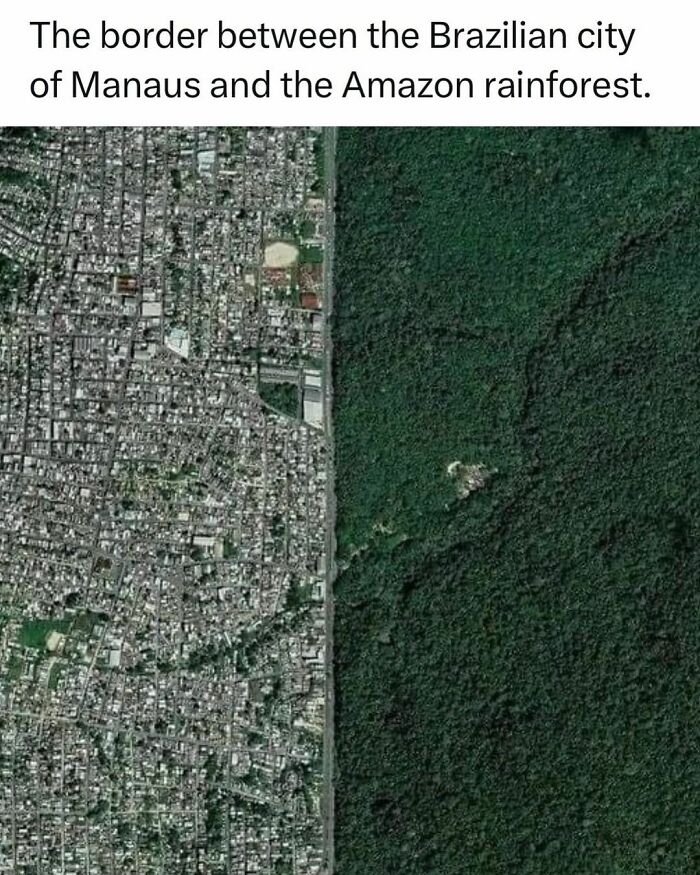
Image credits: howeverythingworks
#65
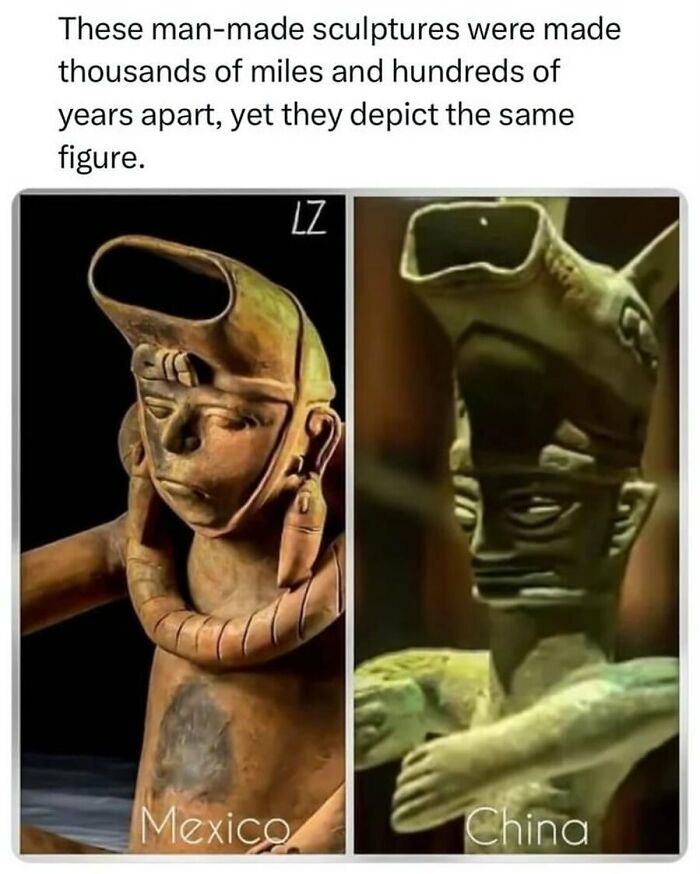
Image credits: howeverythingworks
#66
"Arctic hares live in Canada’s icy tundra regions, where their biggest defense against the extremely cold environment is their furry coat. In winter, their coat is a brilliant white colour. Not only does it keep them warm, but it also acts as camouflage, making it harder for predators like wolves, foxes, polar bears and snowy owls to see them in the snow. When the snow melts a little in summer, the hare’s coat becomes an ashy grey-brown colour to blend in better with the surrounding grassy, rocky tundra. Despite these seasonal changes, Arctic hares always have a fluffy white tail."
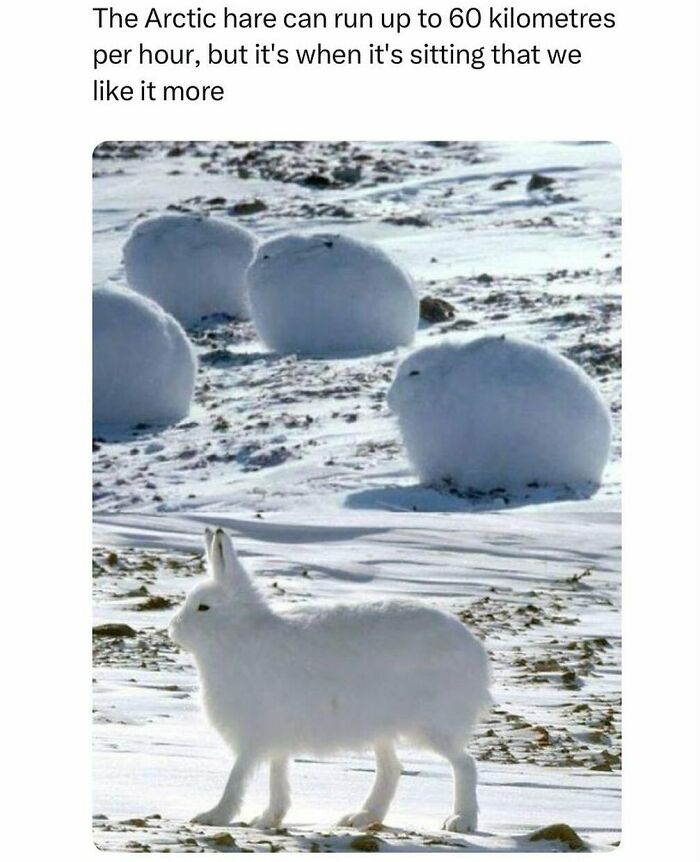
Image credits: howeverythingworks
#67

Image credits: howeverythingworks
#68

Image credits: howeverythingworks
#69

Image credits: howeverythingworks
#70

Image credits: howeverythingworks
#71

Image credits: howeverythingworks
#72
"The life cycle of a strawberry plant typically begins with the germination of seeds or the planting of runners. From there, the plant grows into a mature plant with leaves, flowers, and fruits. After pollination, the flowers develop into strawberries. Once the fruits are harvested, the plant continues to grow, producing new runners and potentially new plants, completing the cycle."

Image credits: howeverythingworks
#73

Image credits: howeverythingworks
#74
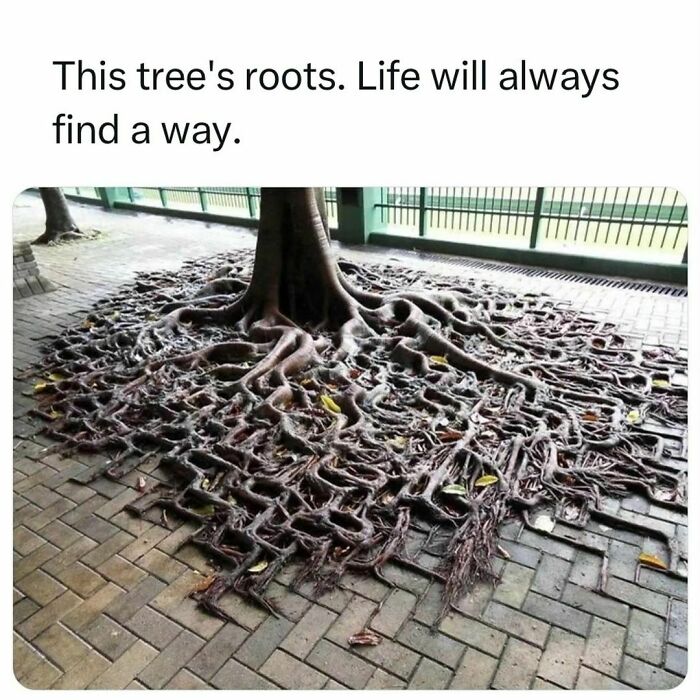
Image credits: howeverythingworks
#75
"Tokyo, Japan, is the largest city on Earth, with a population of 37.4 million people."

Image credits: howeverythingworks
#76

Image credits: howeverythingworks
#77

Image credits: howeverythingworks
#78
"The shell featured in the images belongs to Lioconcha hieroglyphica, a species of saltwater clam known for its distinctive pattern that strikingly resembles ancient hieroglyphic writing. These unique markings are natural pigmentation patterns and not actual writing. This clam is one of many mollusk species that display intricate and varied shell designs, which are the result of a combination of genetic factors and environmental influences. The pigmentation patterns are typically produced by specialized cells called mantle cells, which deposit proteins and pigments as the shell grows. These patterns can serve several biological functions, including camouflage, species identification, and sexual selection. The resemblance to hieroglyphics is purely coincidental, but it provides a fascinating example of pareidolia, where humans perceive meaningful patterns, such as letters or faces, in random or ambiguous visual configurations."
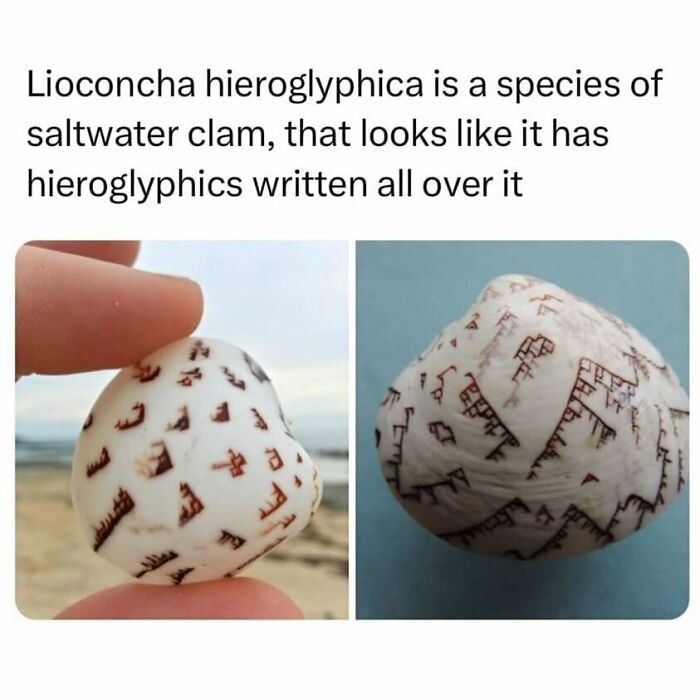
Image credits: howeverythingworks
#79

Image credits: howeverythingworks
#80
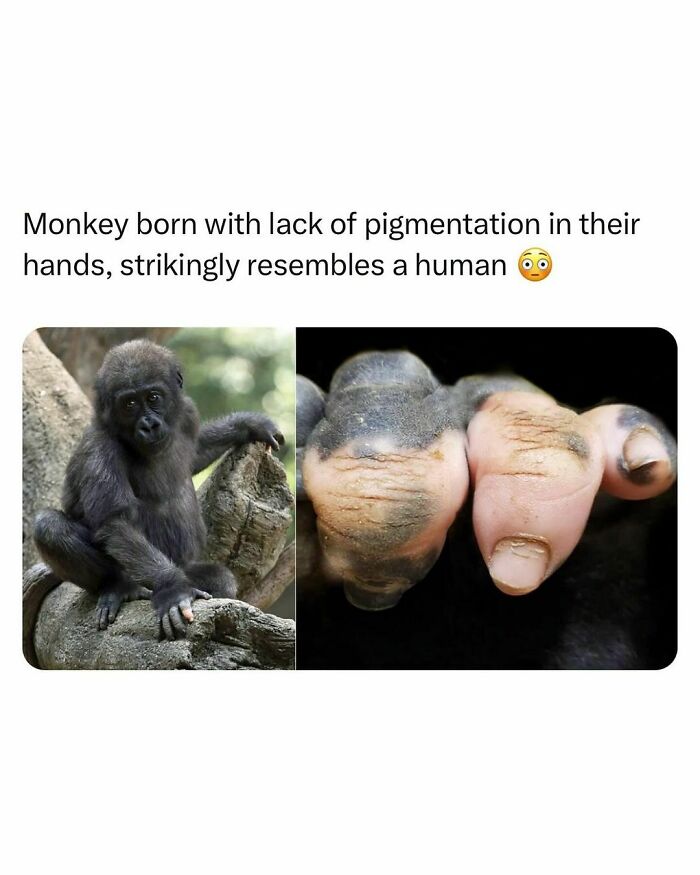
Image credits: howeverythingworks
#81
"Golden langurs have evolved to be very wary of humans. These animals are naturally shy and secretive, and they have learned to avoid people whenever possible.
This is likely because humans have been known to hunt and kill golden langurs for their meat and fur.
In addition, humans have been responsible for destroying the forests where golden langurs live, which has put these animals at even greater risk.
As a result, the golden langur is one of the most elusive primates in the world, and it’s very rare to see one in the wild."
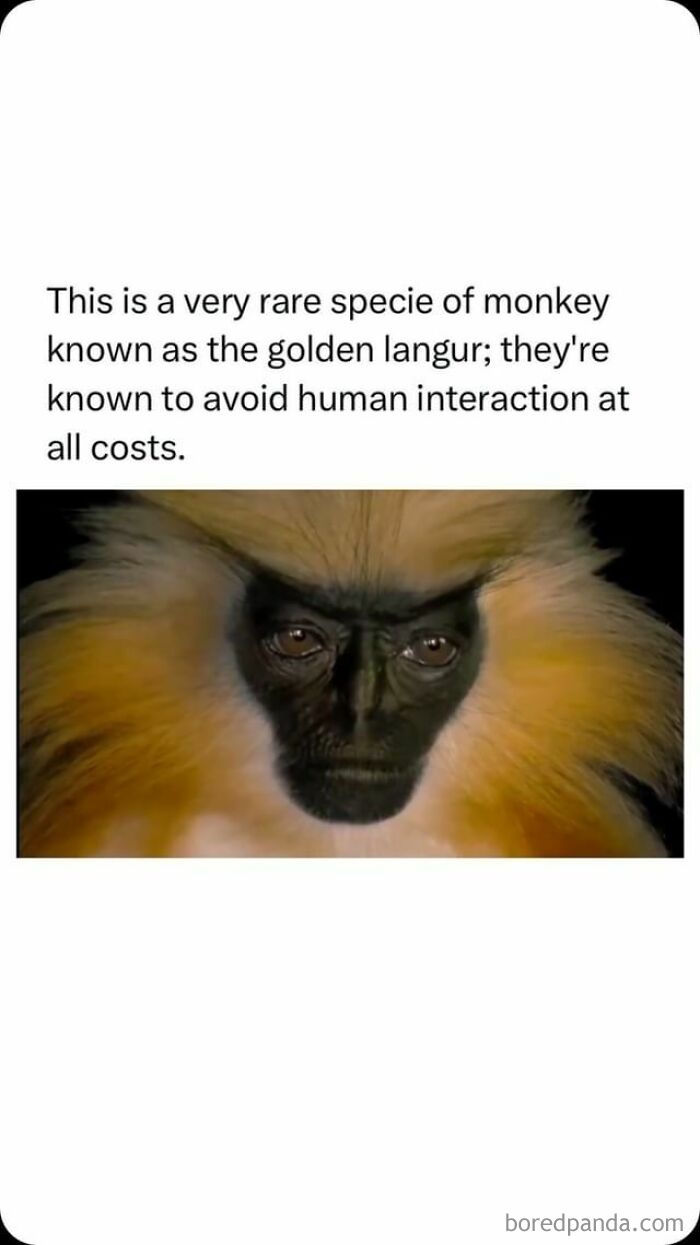
Image credits: howeverythingworks
#82
"Grey eyes are rare because they result from a combination of genetic factors. The color of our eyes is determined by the amount of melanin pigment in the iris, with less melanin resulting in lighter colors like blue, green, or grey. Grey eyes occur when there is a low level of melanin present in the iris, along with scattering of light. This combination creates the appearance of grey. The genetic inheritance of these traits is complex, which contributes to their rarity"
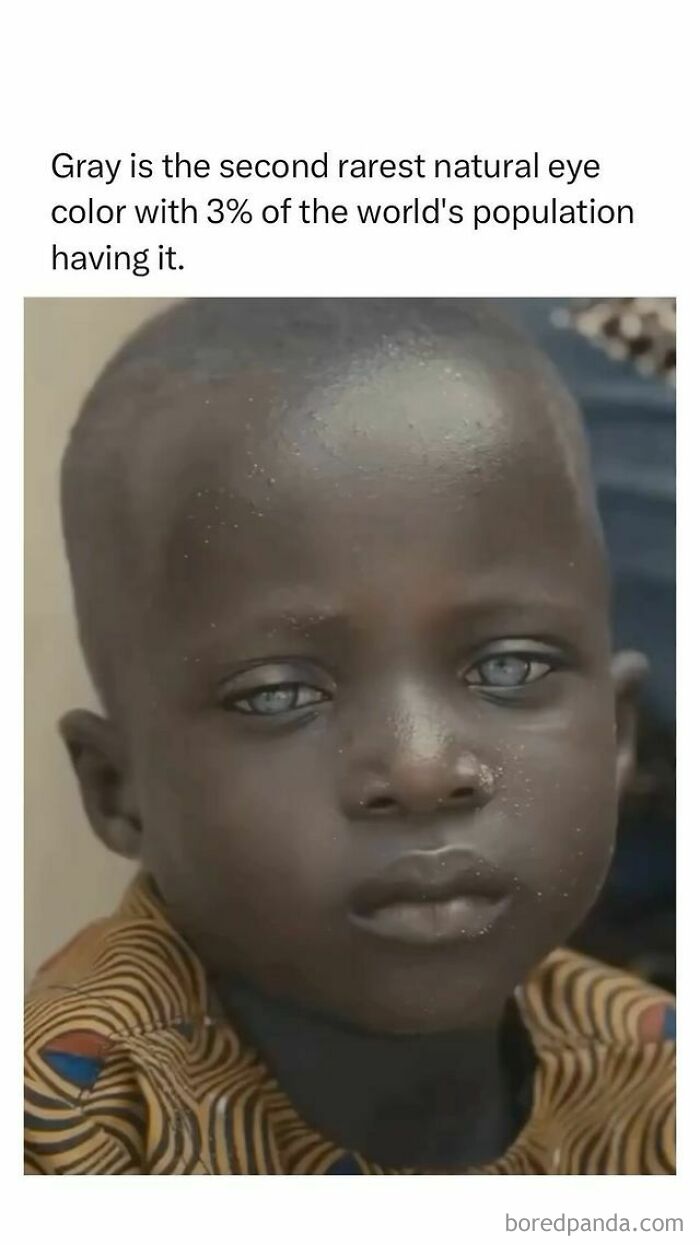
Image credits: howeverythingworks
#83
"An ancient Maya ceramic figurine with a removable helmet, dating back approximately 1,500 years, discovered in El Perú-Waka’, Petén, Guatemala. The figurine is a testament to the advanced craftsmanship and the cultural significance of attire and equipment in Maya civilization. The removable helmet indicates a possible ritualistic or societal status usage, reflecting the complexity of Maya social structures and their ritualistic practices. Such artifacts are invaluable for archaeologists to decipher the societal norms, roles, and beliefs of ancient civilizations."

Image credits: howeverythingworks
#84

Image credits: howeverythingworks
#85

Image credits: howeverythingworks
#86
"Farmers put earmuffs on calves during the winter to protect them from the harsh cold and prevent frostbite.
These young animals are particularly vulnerable to the cold due to their age and size, requiring additional measures to ensure they remain warm during the winter months."

Image credits: howeverythingworks
#87

Image credits: howeverythingworks




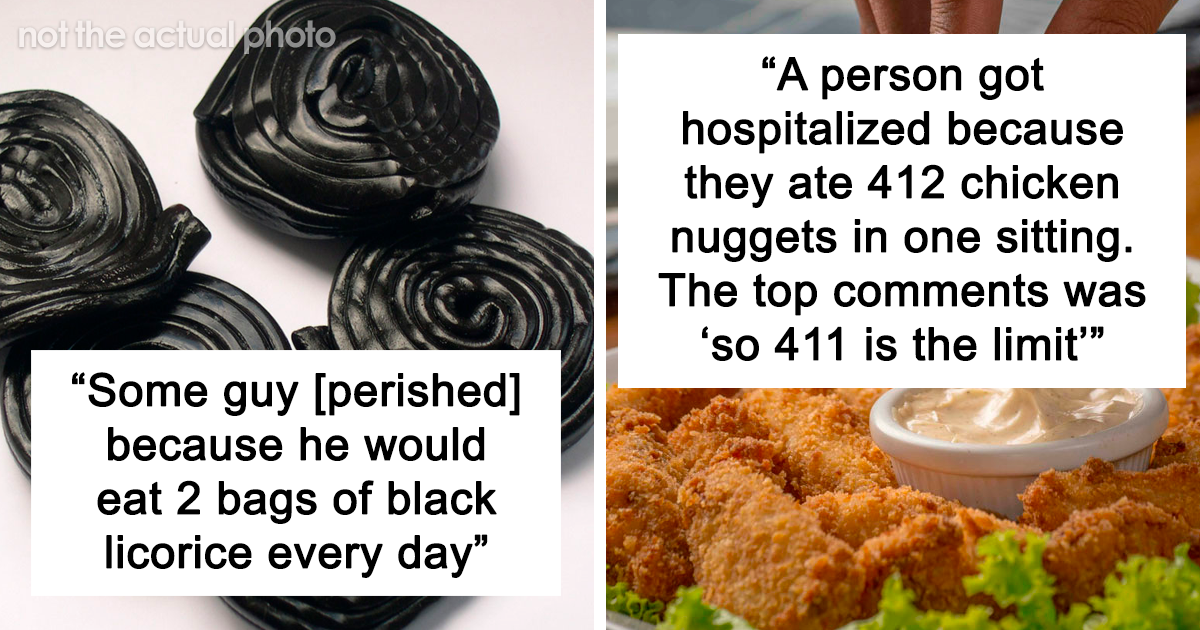







 English (US) ·
English (US) ·